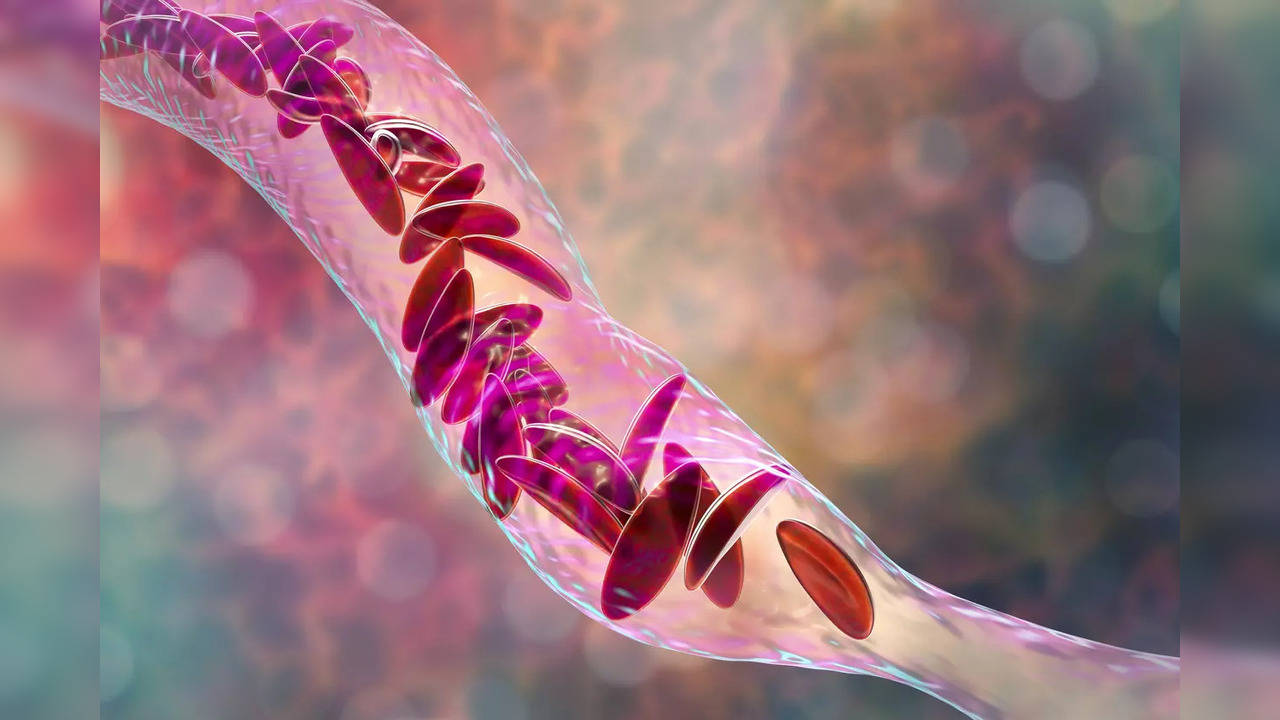Sickle cell anaemia: Know the symptoms of the interited condition
In sickle cell anaemia, the cells die within 10-20 days because they break easily. When the body doesn’t have enough red blood cells, it can’t transport oxygen, thus leaving the body fatigued.

In sickle cell anaemia, some red blood cells are shaped like sickles or crescent moons, making it difficult for the, to move through the blood vessels.
Photo : iStock
New Delhi: Sickle cell anaemia is an inherited disorder which affects the red blood cells of the body. Red blood cells are round and which makes it easier for them to move easily through blood vessels. In the case of sickle cell anaemia, some red blood cells are shaped like sickles or crescent moons, making it difficult for them to move through the blood vessels. These cells also become rigid which can then slow down or block the flow of blood.
Symptoms of sickle cell anaemia:
- Anaemia: Red blood cells live for about 120 days before they are replaced by newer ones. But in sickle cell anaemia, the cells die within 10-20 days because they break easily. When the body doesn’t have enough red blood cells, it can’t transport oxygen, thus leaving the body fatigued.
- Swelling of hands and feet: This is caused because the sickle-shaped red blood cells block the blood circulation in the hands and feet.
- Frequent
infections : This is caused due to sickle cells damaging the spleen. Vaccinations and antibiotics are regularly given to infants and children with sickle cell anaemia to prevent potentially life-threatening illnesses like pneumonia. - Periodic episodes of pain: Due to the sickle shape of the red blood cells, the blood cannot flow through the tiny blood vessels of the chest, joints and abdomen, which then causes pain. Some adolescents and adults with sickle cell anaemia also have chronic pain, which can result from bone and joint damage.
Causes of sickle cell anaemia:
Sickle cell anaemia is an inherited disease. The blood carried by sickle celled red blood cells are rigid, sticky and misshapen. Both mother and father must have a sickle cell gene for a child to be affected. When both parents pass the altered gene to the child, it causes sickle cell anaemia. If only one parent passes on the gene to the child, the child is likely to become only a carrier of the cell and not be affected by it.
Disclaimer: Tips and suggestions mentioned in the article are for general information purposes only and should not be construed as professional medical advice. Always consult your doctor or a dietician before starting any fitness programme or making any changes to your diet.
Trending:
End of Article
Subscribe to our daily Lifestyle Newsletter!
Related News





ED Accuses Arvind Kejriwal Of Manipulating His Diet; Can Eating Mangoes Increase Blood Sugar In People With Diabetes?

Risk Of Bird Flu Spreading To Humans Is Enormous: WHO

61-Year-Old US Man Claims Body Of A 38-Year-Old, Reveals Biohacking Journey

What Is Geriatric Pregnancy? Experts Share Unique Challenges And Risks

Optical Illusion Personality Test: What You See First Can Reveal What You Desire The Most









